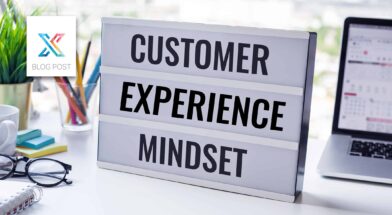In AEC and professional services, strong client relationships are foundational to success. Technical expertise matters, but trust, responsiveness, and clear communication often determine a project's true outcome. Many firms have built their reputations on the strength of these relationships, relying on regular meetings, project check-ins, and post-project interviews to stay closely aligned with their clients.
Due to this, some professionals view electronic feedback with hesitation. When teams are already engaging in frequent conversations, the idea of sending a survey can feel redundant—or even impersonal. However, electronic feedback isn’t meant to replace those one-on-one conversations. It’s designed to enhance them.
When implemented thoughtfully, electronic client feedback brings added depth to client dialogue, clarity to intuition, and visibility to areas that might otherwise go unnoticed. It elevates the human connection by making it more focused, informed, and intentional.
Here’s how it works—and why it matters.
The Misconception: Surveys Undermine Personal Connection
A common objection we hear is that sending an electronic survey feels impersonal. This seems to fly in the face of the client-centric culture many firms work hard to build. There’s a concern that asking clients to fill out a form may send the wrong message—that you're too busy to pick up the phone or, worse, that you’re not really listening.
After all, if you’re regularly meeting with your clients, asking for feedback, and maintaining good rapport, isn’t that enough?
The answer is… not quite.
Yes, those personal conversations are essential. But they’re also limited. They rely heavily on memory, mood, and the moment. They’re often anecdotal and don’t always yield the depth or clarity needed to fully understand the client experience—especially when your goal is continuous improvement across dozens or even hundreds of projects.
Electronic feedback, when done well, is not about replacing the human side of client service. It’s about gaining insights that are difficult (if not impossible) to surface in casual conversations alone. It’s not designed to replace human-to-human communication. It was built to inform it. Strengthen it. And quantify what can’t be captured through conversation alone.
Data Brings Direction to Client Conversations
When project managers or executives ask clients, “How are we doing?” the answers are rarely detailed. They may hear polite praise, vague generalities, or surface-level feedback. Much like asking a teenager, “How was your day?” the response is often short—unless something major happened.
That’s not because clients are hiding something. It’s because, without structure or prompting, most people (many of whom are conflict-avoidant by nature) default to general answers—especially when things are mostly going well and the feedback feels risky to share.
And when verbal feedback comes, it’s not easy to quantify, compare, or track over time.
Electronic feedback, especially when gathered at key project milestones, brings much-needed structure to the conversation. It adds specificity, highlights blind spots, and enables more focused and intentional dialogue with your client.
Instead of starting every client check-in with a blank slate, you walk in informed. Instead of asking, “Where can we improve?” you can say, “I noticed you rated our responsiveness below expectations—can you help me understand where we are falling short in that area?”
That’s not a generic question. That’s a springboard to meaningful insight. You’re not guessing. You’re entering the conversation with context, direction, and a shared frame of reference.
The Power of Specific, Timely, Personalized Feedback
Gathering meaningful client feedback requires more than simply sending a survey—it requires thoughtful timing, relevance, and tone.
Feedback is most valuable when requested at key milestones throughout the project lifecycle—such as after kickoff, at the 50% design or construction mark, or following project completion. Asking for input when it’s most top-of-mind helps clients respond more meaningfully and ensures the insights are actionable.
Surveys are also far more effective when they come from someone the client knows—typically the project manager or principal leading the engagement. This personal connection reinforces that the feedback request is genuine and that someone on the other side is actually listening.
Modern customer feedback software—like Client Savvy's Client Feedback Tool—enables personalized, branded communication by allowing surveys to be sent on behalf of a specific individual, such as the client's account manager. This sender impersonation feature boosts open and response rates while fostering genuine, insightful feedback through customized, firm-branded messaging.
Equally important is the focus of the questions. Feedback requests should be tied to the specific project—not the firm as a whole—and should measure performance around expectations rather than general satisfaction. While satisfaction is subjective, expectations are measurable. Framing questions around how well the firm is meeting or exceeding expectations in areas such as communication, responsiveness, scheduling, and billing provides clearer, more actionable insights.
When you align timing, context, and tone with a clear purpose, electronic feedback becomes a natural extension of the client relationship—not a disruption to it.
Surveys Aren't the End, They're the Beginning
The real value of electronic feedback lies in what happens next. Survey results should guide follow-up conversations—not replace them.
Rather than starting a conversation with a vague question, the feedback gives you a head start. You’re able to say, “We saw your feedback on communication during the pre-construction phase. Let’s talk more about how we can improve that moving forward.” Or, “You mentioned we exceeded expectations on schedule. We’d love to understand what made the biggest impact.”
This changes the dynamic entirely. It turns the conversation from abstract to actionable. From assumption to clarity. From “Are there any issues?” to “Let’s talk about what you’ve already shared.”
And it builds trust—because your client sees that you’re listening and, more importantly, that you’re acting on what you’ve heard.
Quantify the Experience. Benchmark the Relationship.
One of the key advantages of structured electronic feedback is the ability to track and measure the client experience over time.
Verbal feedback is useful, but it doesn’t scale—and it’s hard to benchmark. With consistent, structured feedback, firms can identify trends across projects and teams, evaluate performance at different stages, and measure how experience evolves over time.
This isn’t about creating reports for the sake of it. It’s about seeing the bigger picture—spotting risks early, celebrating wins, and improving consistency firm-wide.
Structured feedback doesn’t replace your intuition. It strengthens it. It gives you data to support what you feel—and clarity when you’re unsure.
The Real Goal: Better Projects, Happier Clients, Stronger Partnerships
Electronic feedback isn’t about checking a box or meeting a quota. It’s about reducing misunderstandings, improving communication, and creating client experiences worth repeating.
When used well, feedback tools don’t diminish the personal relationships firms are known for—they amplify them. They make it easier to spot issues early, build trust faster, and ensure clients feel heard throughout every phase of a project—not just when something goes wrong.
In Conclusion: Human + Digital = Smarter, Stronger Client Relationships
For firms that value client-centricity, feedback should be ongoing, intentional, and actionable. One-on-one conversations remain essential, but electronic feedback provides clarity, structure, and scalability.
Together, they create a richer understanding of the client experience and a stronger foundation for trust.
Electronic feedback isn’t a shortcut or a substitute. It’s a strategic enhancement.
It’s the difference between guessing and knowing. Between surface-level and meaningful. Between reactive and proactive.
Electronic feedback doesn’t replace talking to clients. It makes the conversation better.





